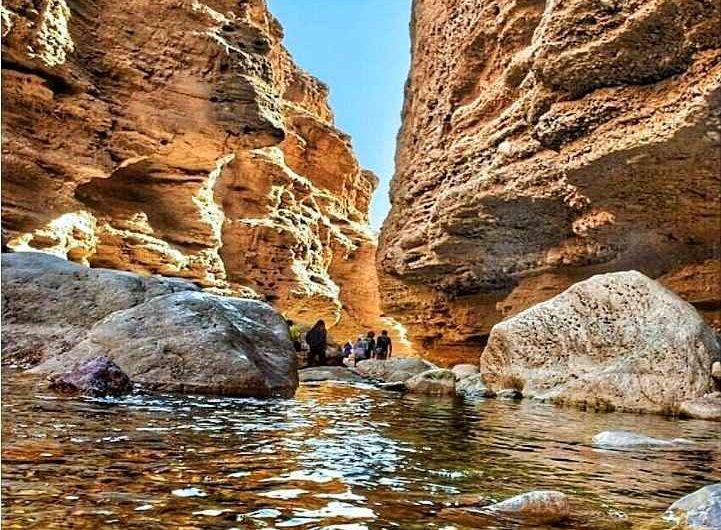Tabas
Located in the heart of the central desert of Iran, this city is famous for its canyons, rice fields and picturesque oases that appear out of nowhere. Tabas is the capital of the district of the same name, in the province of South Khorasan. This desert city has hot summers and moderate winters. Due to its climate, many believe that the name of the city comes from the Persian word “tab” which means “heat” or “fever”.
Kal-e Jeni Canyon
An ideal destination for those who want to be fascinated by mystery and wonder. It is a calm and cool valley in a warm region where signs of life go back at least to the time of the Sassanid Empire. The beautiful and exciting valley, which the ancient inhabitants of Tabas called Valley of the Geniuses, is considered a meeting place for spirits and geniuses and has become one of the city’s tourist attractions. In the Kal-e Jeni canyon there are many narrow passages and several waterfalls. This dream valley is made up of many floods and is one of the most beautiful tourist destinations in Iran, created by geological phenomena. The water currents of the trail give rise to the emergence of various plants causing a pleasant climate in the summer and spring seasons making it an ideal destination for nature lovers and trekkers in Iran.
If you are passionate about mountains, desert landscapes, canyons, hiking, anthropology, historical landscapes and fascinating culture of the Middle East, SITO Travel will help you organize your trip to Iran. Get in touch with us because our experience is born and develops in the field
Esfahak
A town located about 38 km from Tabas, where it enjoys an ideal climate for agriculture, in fact most of the inhabitants are farmers. Going to this town is like taking a trip to the heart of nature and history. The houses in the village are usually built with bricks and mud and most of the time they have only one floor. In the corners of the village you can still visit the traditional baths called Khazineh. Local music is especially important to the villagers. Local songs and the melody of “tar” are two inseparable elements of the town festivals. In this town you can taste the delicious dates and saffron of the town.
Azmiqan village
It is a unique natural wonder of Tabas, in the northeast of Iran where a dreamlike landscape resides: fresh springs, wild plants and labyrinthine corridors are the natural and historical attractions of the town. In Azmiqan you can see the cultivation of dates on one side and rice on the other, a strange landscape.
Takht-e-Arus
Literally translated as “bride’s throne”, Takht-e Arus is one of the town’s tourist attractions. It is a huge white rock that rests on a river bed at the bottom of a valley. Another attraction is a holy shrine said to be the final resting place of one of Imam Ali’s grandsons, the first Shiite Imam. One of Azmiqan’s historical attractions is the old houses on the outskirts of town. Some of them are now used as warehouses or barns.
Golshan Garden
It is considered a masterpiece from the time of Zand and Qajar and its existence in the middle of the two Iranian deserts, Dasht-e Lut and Dasht-e Kavir, seems like a miracle. It was built in the 13th century by order of the ruler of Ferdows and Tabas. Many poets have visited the garden of Golshan, the beauty of the garden has fascinated them and they have left poetic traces in their poems about this green garden. Golshan Garden is almost square and has a relatively large central pond with three fountains. The only building in this garden is a two-story building with a small basement. The place where this garden was built was originally a palm grove. The palm trees in the Golshan Garden are therefore the oldest trees in this garden.
Tabas Citadel, Kohan-Dej
It is one of the oldest monuments in Tabas. It dates back more than 1000 years. It appears that the citadel was built by Mir Hossein Khan in the 8th century. One of the most interesting features of the Tabas Citadel is that it has witnessed many events and has historically hosted many people, such as Naser Khosrow, a well-known Iranian poet and traveler, who was a guest of this castle for 17 days.
The Halvan cave and the Halvan desert, with their beauties, are some of the natural attractions of Tabas. Halvan Cave is about 160 million years old and is related to the Middle Jurassic period. It is located 75 km northwest of Tabas and attracts many tourists each year. Detailed information on the length of this cave is not available.



Comments